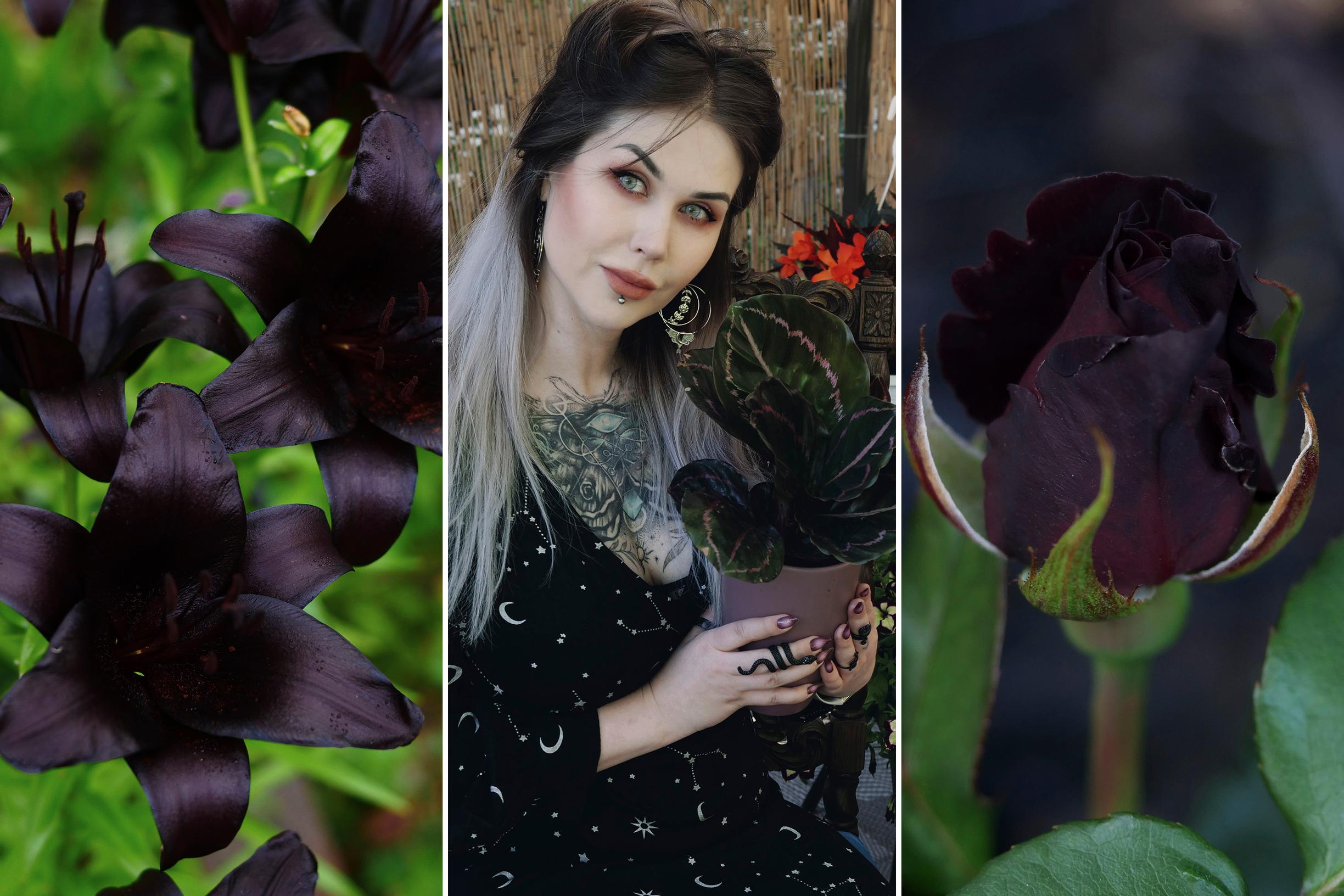
Ida-Emilia’s goth garden: “I can’t wait for my black rose to bloom!”
About four years ago, Ida-Emilia Kaukonen noticed a decorative sweet potato, ‘Solar Power Black’, when visiting a garden shop. That sparked the idea of a goth garden. In summer, her garden is in bloom with dark lilies, tulips, and even black sunflowers.
Ida-Emilia, you call your garden a goth garden—what do you mean by that? Could you elaborate a bit, please?
A goth garden refers to a type of garden that focuses on dark-toned plants. Overall, my garden is just an ordinary home garden in Espoo city, Finland. What’s special are the varieties I grow. There are around 50–60 different dark-toned plants growing either in the garden or inside the house. Goth gardens draw inspiration from the themes of modern goth subculture or historical Gothic architecture and arts.


In a goth garden, all these themes usually converge: dark colors, romance, Victorian aesthetics, vampire vibes, and a certain kind of darker fantasy.
Could you tell us more about how the goth theme is reflected in the garden?
If we’re being precise, goth and Gothic aren’t quite the same. The goth genre was originally purely music-related, but after a few twists and turns, other themes like aesthetics started to become part of this subculture.
Meanwhile, a Gothic garden refers to Neo-Gothic and the related Victorian-era Gothic styles. When the Neo-Gothic style was popular, features such as rose windows, ribbed vaulting, and spires or pointed windows began to appear in buildings and gardens. If you picture Notre Dame in Paris, you’ll get a good sense of Gothic architecture.

How do black flowers fit into the concept of a goth garden?
Most black flowers didn’t exist during the heyday of Neo-Gothic style. Other art forms, such as literature, later became involved in Gothicism, as well. Many are probably familiar with Bram Stoker’s Dracula, the cover model for all vampires! And some also remember actor Bela Lugosi, who played the role of Dracula. One of the early goth bands, Bauhaus, released a song called Bela Lugosi’s Dead. That song fused the Gothic literary elements from Dracula with a dark atmosphere. It soared in popularity, and the music grew gloomier, leading to a sort of blend of “goth punk” and Gothicism. In a goth garden, these themes often come together: dark tones, romance, Victorian aesthetics, vampire vibes, and a certain kind of darker fantasy.
I think a “black garden” is one that focuses specifically on black plants, even if the gardener didn’t have an interest in the goth subculture or Gothicism.


My current garden is a practice garden. I want to learn as much as I can so that one day, when I find the home of my dreams, I can create a dark fairy-tale garden.
What is your garden like, and how large is it?
At the moment, I live in a detached house. The garden is maybe around 150 square meters in size, of which roughly 50 square meters are dedicated to garden areas. It’s a bit tricky to garden now, because the city unfortunately removed a whole spruce hedge for a new rail line. So we’re basically missing an entire “wall”, which has a surprisingly big impact.
My current garden is a practice garden. I want to become as skilled as possible so that one day, when I find my dream home, I can create a dark fairy-tale garden. Maybe we’ll look for a manor next so I can have enough space for the garden. Some might think I’m joking, but I’m not. I even went to see a castle that’s for sale. Admittedly, I’m still missing “a couple” of euros!
It really drove home the thought that there must be more dark plants out there. My sense of aesthetics was already very goth-inspired, so a garden of black flowers would be a brilliant extension of my self-expression and creativity.
When did you start gardening, and what sparked your initial interest?
Originally, I got into it almost by accident about four years ago. I wanted to live in a detached house. I’m a bit of a recluse, and being in the hustle and bustle of Helsinki started to weigh on me. I rented a house with my partner that had a garden. We asked the agent if we’d be allowed to tend it. The agent said the landlord would actually like someone to care for the garden. So I had nothing left to do but learn. I first took photos of every flower I noticed and posted them in Facebook groups for identification. As I learned, a whole new world opened up to me.
Back then, we took a trip to a garden center, where I saw the most beautiful, largest decorative sweet potato ‘Solar Power Black’ I’ve ever come across. It really drove home the thought that there must be more dark plants out there. My aesthetic sense was already very goth-oriented, so a garden of black flowers would be the perfect extension of my self-expression and creativity. I’m not entirely sure if I had the idea even before that, but I do recall that this specific decorative sweet potato stole my heart and sealed my decision.
It’s important to keep in mind that there’s no such thing as a truly pure black flower; it’s actually an illusion produced by light and our vision working in tandem.
What kinds of plants do you collect for your garden?
I focus on two things. In the outdoor garden, I concentrate on black flowers and dark foliage. In other words, the flower itself should be dark, or the leaves must be dark. The ‘Black Lace’ elder is a good example. Its blooms are softly light pink, but its leaves are very dark greenish gray, which makes the shrub look black.
It’s important to keep in mind that there’s no such thing as a truly pure black flower; it’s actually an illusion produced by light and our vision working in tandem. In reality, black flowers are generally extremely dark red or a deep purple.
As for houseplants, I’ve begun to focus on unusual or rare plants. I often pick slightly darker-leafed varieties, but I also have a secret vice... pink! I just drove three hours to another city just to get a ‘Pink Princess’ philodendron. I also have a couple of seed packets for a challenging but fascinating project. I plan to grow the black bat flower, Tacca chantrieri. It’s a very exotic black flower.
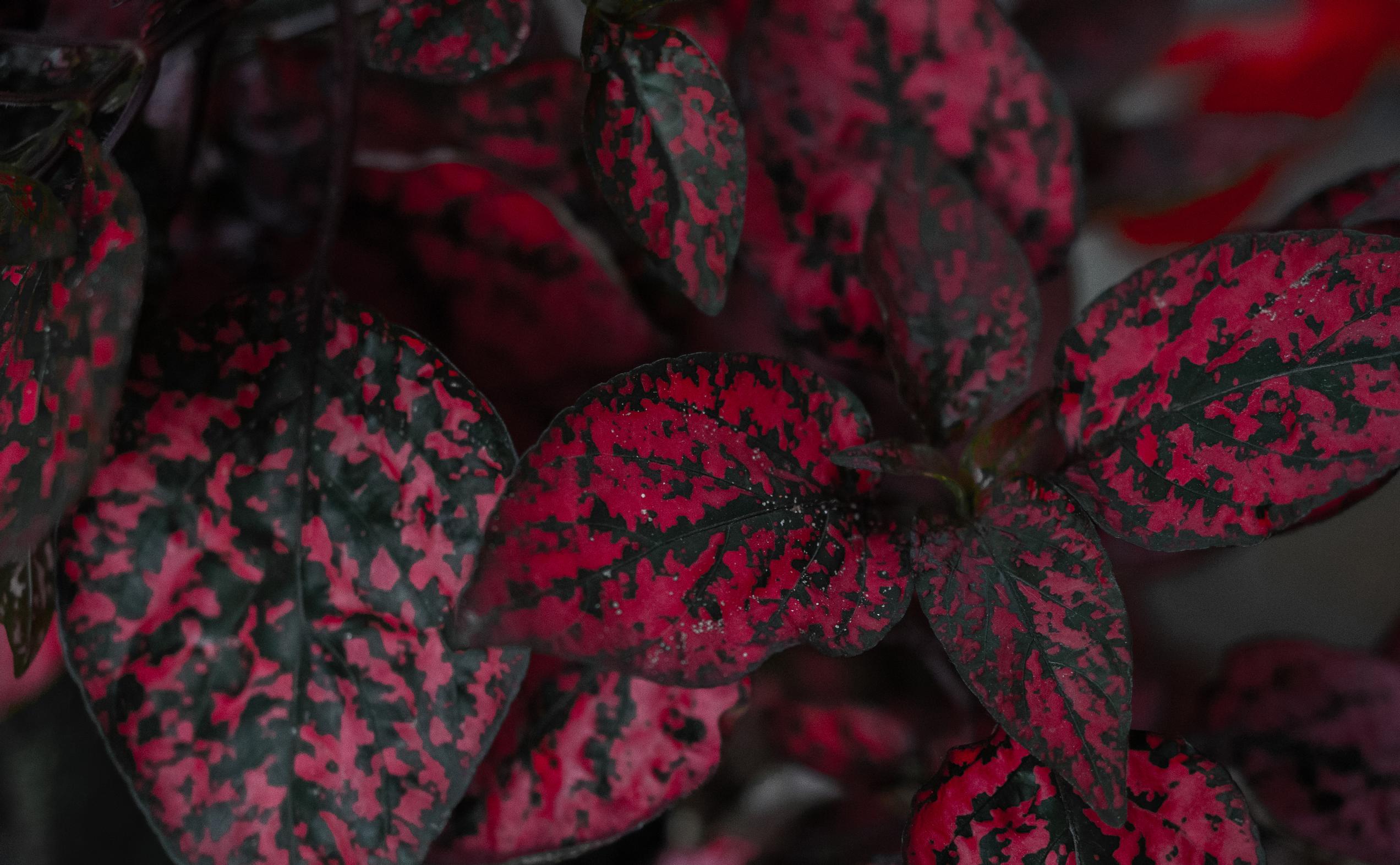
Here's a useful tip: Shine the light through the leaves from behind, so the leaf is illuminated. That way, you may spot traces that otherwise wouldn’t be visible.
On what basis do you choose your plants?
When I choose a flower, I look at three things. One is how dark the color I’m after is. If there's a black petunia next to a very dark purple petunia, I’ll pick the black one. If we’re talking about a ‘Pink Princess’ philodendron, I'll pick one that genetically produces a lot of pink.
Second, I check if the plant is vigorous. Whether the leaves are healthy, the stem is robust, and so on.
Third, I look for any signs of pests. I still need to improve my thoroughness here. I just vowed not to visit a plant shop again without a magnifying glass and a flashlight. Here's a useful tip: Shine the light through the leaves from behind, so the leaf is illuminated. That way, you may spot traces that otherwise wouldn’t be visible. Yesterday, I ended up not buying a ‘White Wizard’ philodendron, even though that’s not very common either. But the plant had tiny brown spots on its leaves, and one or two leaves were strangely yellow. I likely would’ve brought thrips home.
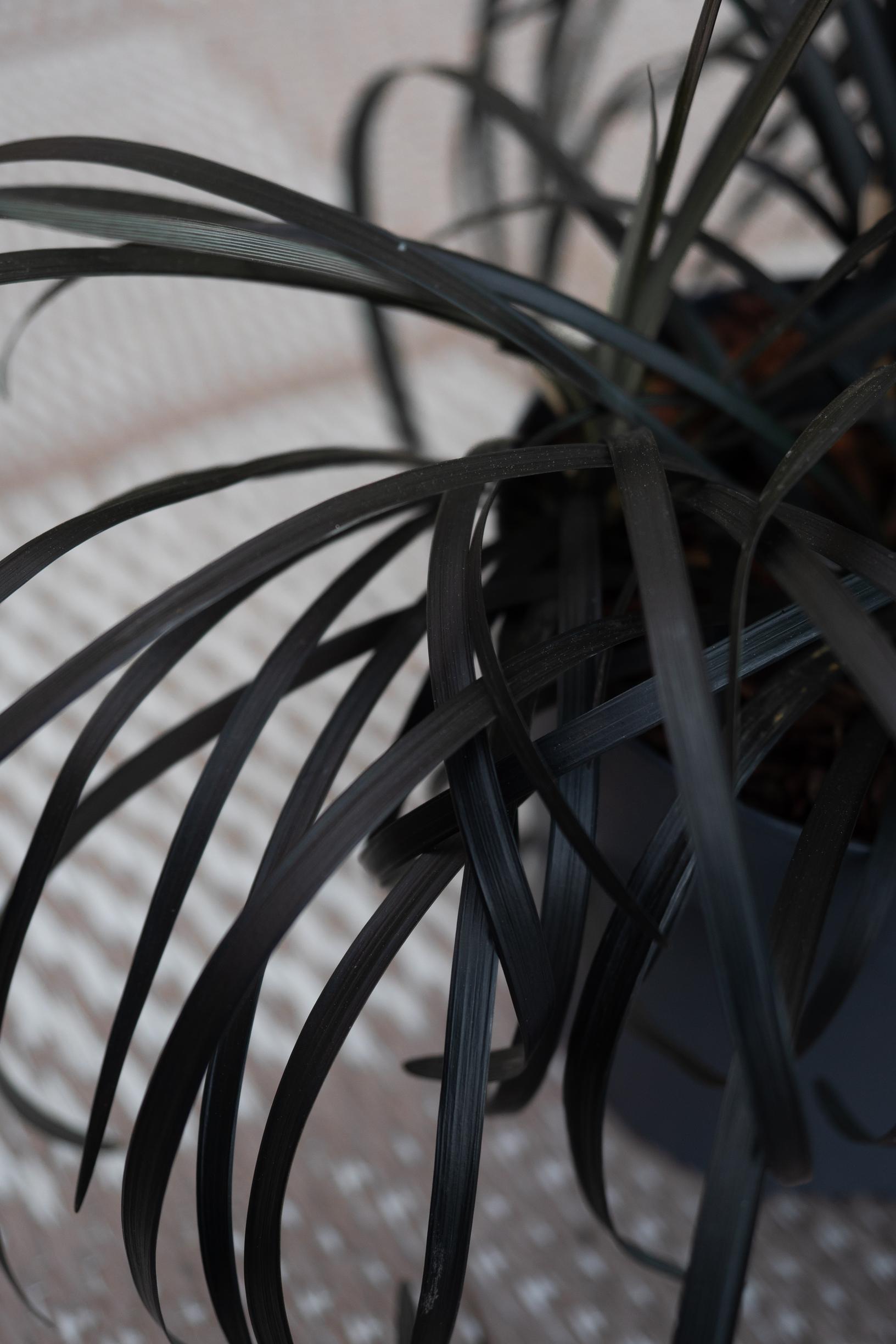
What have you learned about dark plants and how to care for them?
Perhaps one of the most fascinating aspects is how a plant appears black to begin with. Plant colors stem from various pigments that their cells produce. The most common pigments are chlorophyll (green), carotenoids (yellow and orange), and anthocyanins (red, blue, and purple). Dark flowers and leaves get their coloring mainly from anthocyanins. These pigments can create deep reds, purples, and blues. When a plant has a very high concentration of anthocyanins, the color can appear nearly black, especially in the shade. Dark leaves can also be packed with chlorophyll, giving them a very deep green look. If chlorophyll and anthocyanins combine, it can lead to extremely dark, almost black leaves.
Moreover, a plant’s color is determined by its genes. Certain cultivars are bred to produce more anthocyanins, resulting in darker flowers and leaves.
Growing conditions—light, temperature, and soil pH—can also affect pigment production and thus the plant’s color. From my experience, an unsuitable pH or nutrient-poor soil can quickly influence how dark the plant remains. Just try planting black lilies in a flower bed whose soil hasn’t been changed in years and forgetting to fertilize. Instead of black, you might end up with faded, colorless oddities. I did exactly that once—and that’s precisely why I’ve looked more deeply into what impacts color and what causes it to diminish.

How does sunlight affect dark plants?
Dark plants are sensitive to the sun. The dark pigmentation draws in the warmth of sunlight twice as much. I’ve come to realize it’s best to water the garden early in the morning or in the evening, or otherwise reduce the chance that water droplets remain on the leaves in sunny weather. A water droplet acts like a magnifying glass, concentrating the light on a small spot. This can cause localized heating and potentially scorch or otherwise damage the leaf.
Is there a plant missing from your collection that you’re dreaming about?
Maybe not in the outdoor garden—I’ve tried plenty of different plants there! But as for houseplants, I’m missing a very peculiar type of the ‘Black Velvet’ alocasia called ‘Pink Variegata’. Basically, its almost black leaf has pink variegation. It seems to be very rare in Europe, and even the bulbs can cost hundreds of euros. Alocasia cuprea also has a pink-variegated form, which is also on my wish list. But that plant isn’t very wallet-friendly, either. Still, I love black and pink, and I’m really hoping to find a way to get my current dream plants. Maybe a bit easier option right now would be a ‘Pink Symphony’ caladium. That one is really striking as well. Its leaves look almost like translucent pale pink paper.
Do you find dark plants easily, or do you sometimes have to look for them for a long time?
That really depends on the plant. For instance, last autumn I couldn’t find the ‘Midnight Sky’ or ‘Dark Dimension’ hyacinths in Finland. Nor could I locate the delightfully dark forms of taro (Colocasia esculenta), such as ‘Black Magic’, ‘Diamond Head’, ‘Black Coral’, or the black-and-pink ‘Redemption’. They weren’t available here at all. I ordered the bulbs from abroad, and now I have a bunch of tiny Colocasia “babies” growing like crazy! They don’t stay small for long, though. If they really take off, I’ll be in quite a predicament this fall trying to fit those tropical giants inside!
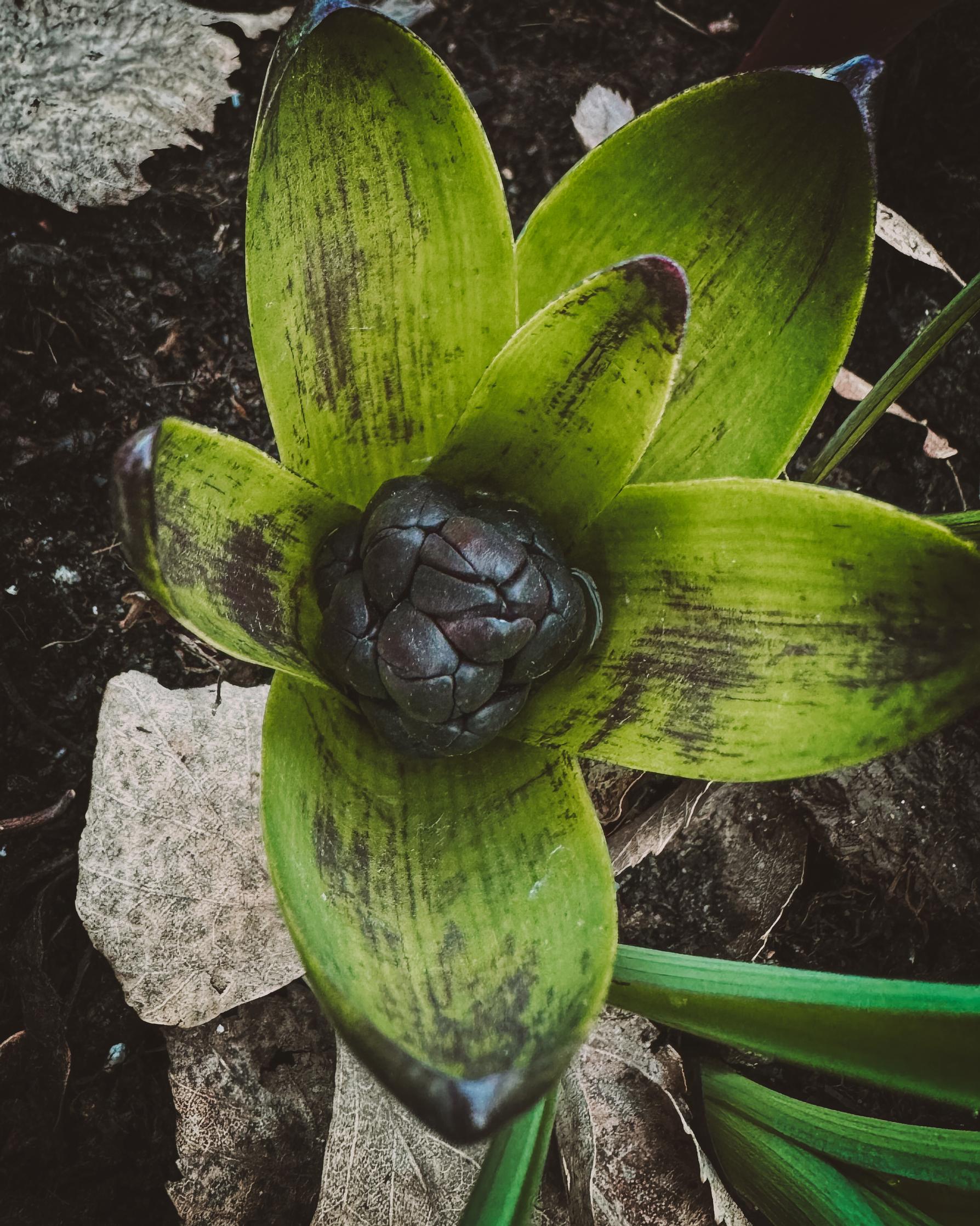
Do you have any international role models you follow?
Many, actually! Perhaps the most famous goth garden belongs to public figure Kat Von D. I also keep an eye on the @theg0thgarden and @soundofstars Instagram accounts since they fit my aesthetic well. For rarities and houseplants, I follow the accounts @nadipokoks, @katieanneplants and @rareplantbae, among others.
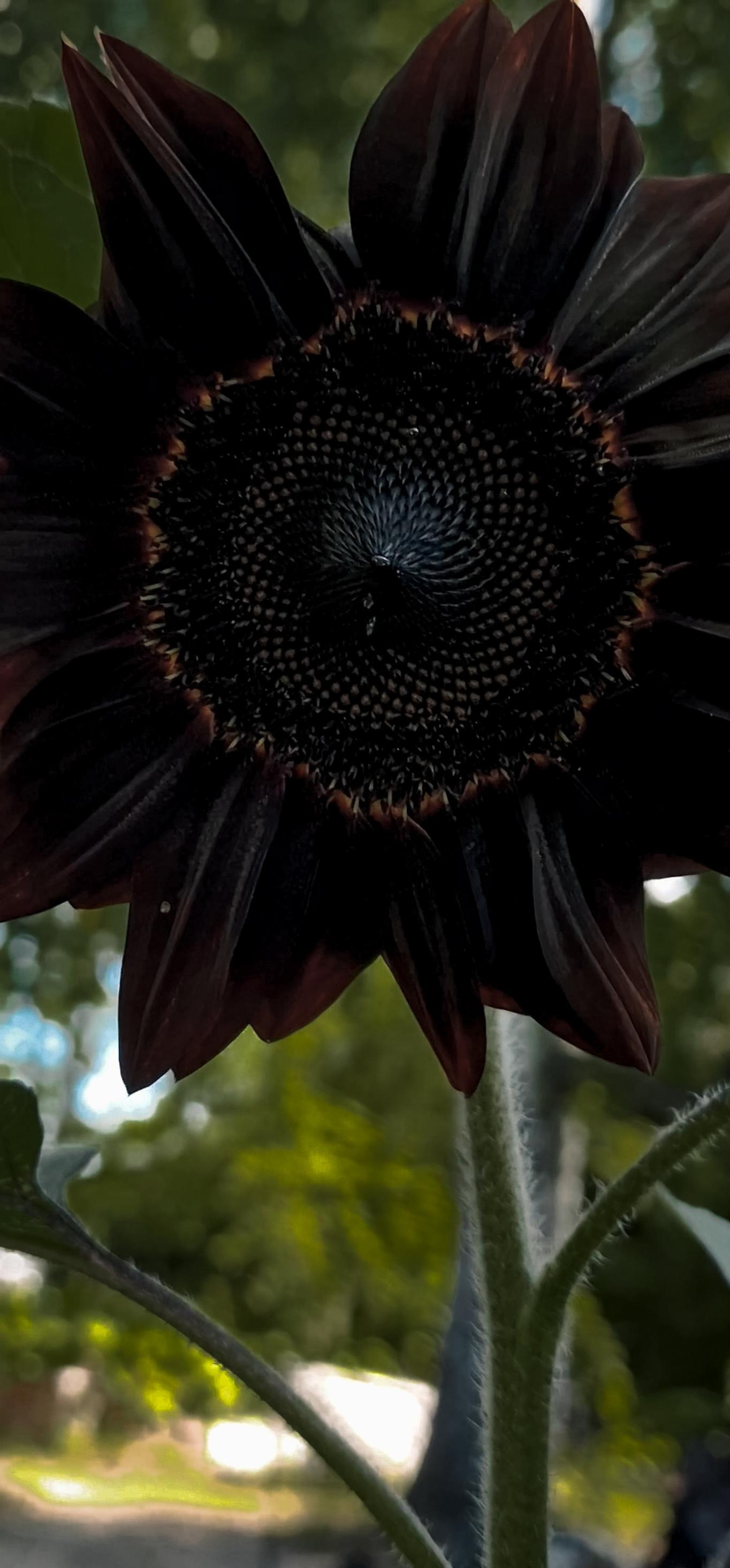
What kind of reactions do you usually get about your garden if someone comes to visit or if you share pictures in a gardening group?
In general, the reception has been very enthusiastic. Visitors often want a tour of the garden and are amazed by a few of the plants. Black sunflowers, for instance, tend to cause a lot of astonishment.
In Facebook groups, people have responded really positively. I get many questions about the colors and varieties in my photos. People often also ask where to buy them, whether they’re rare, and whether they’re hard to care for. Many feel inspired when I explain that caring for most black flowers is pretty similar to caring for any others. I’ve only seen a few negative comments. Someone once lamented that the modern world is horrible because everything has to be gloomy and asked why I’m ruining my garden with these flowers of death.
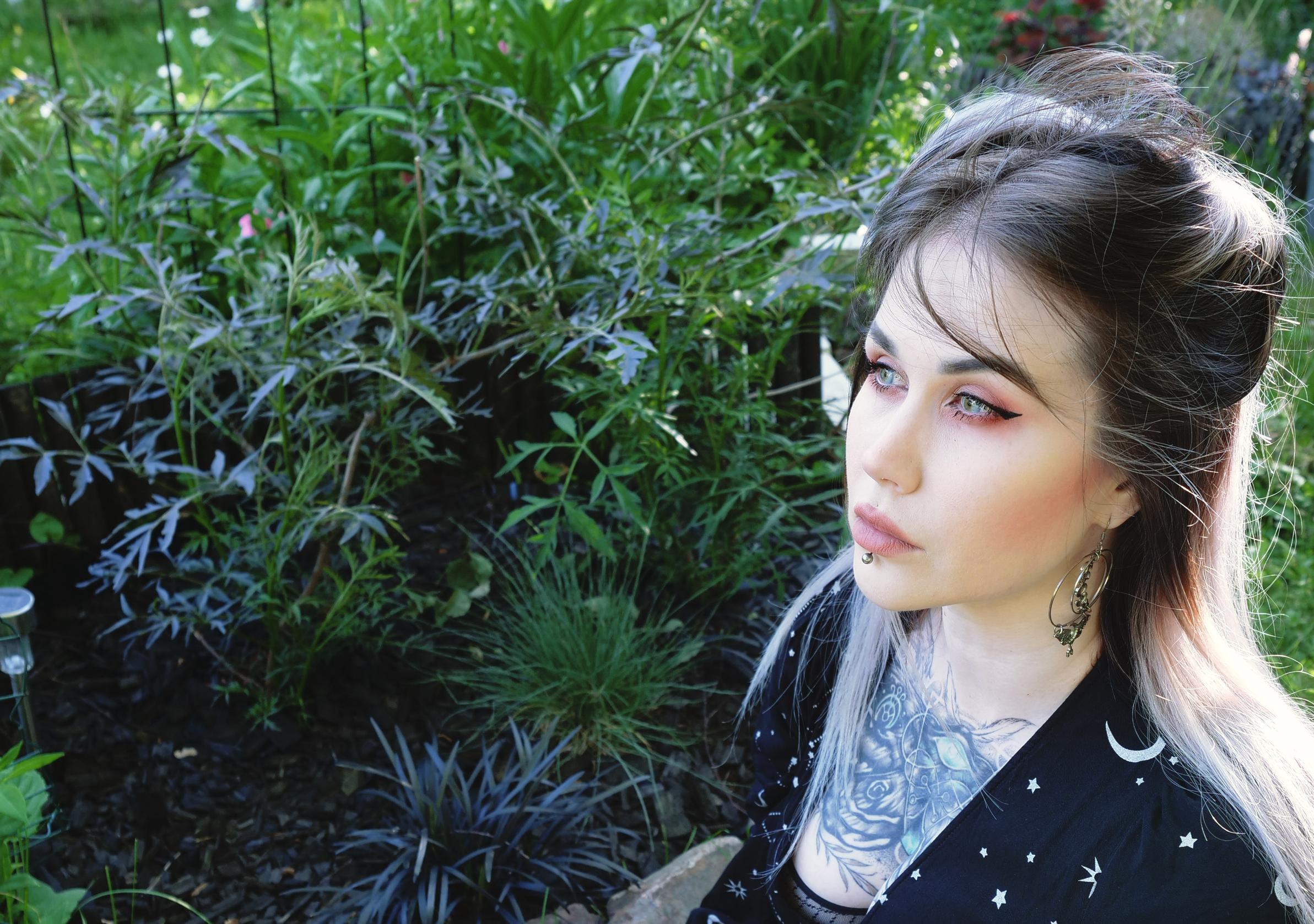
Has anything surprised you as a goth gardener?
Right now, I’m amazed at just how dark the ‘Black Baccara’ rose truly is. I assumed it might just be a fairly dark red and maybe, with some luck, slightly darker than typical store-bought roses. But the first bloom finally pushed its bud open today, and it’s startlingly dark! Its petals form a gradient from deep red near the center to blackish at the edges. I can’t wait for it to fully bloom!


Ida-Emilia Kaukonen’s Instagram is @blackvortexplants.


